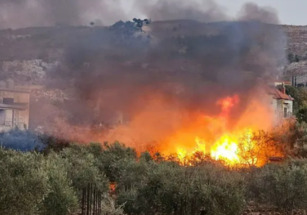-
Climate change: Spain bakes in worst June heatwave in 20 years

The Xinhua reported that Spain is currently in the middle of the worst June heatwave in the last 20 years, with all but two of the country's 17 Autonomous Communities on alert for extremely high temperatures.
It said that parts of southern Spain, such as the regions of Andalusia and Extremadura, are experiencing temperatures of over 40 degrees centigrade, with Cordoba registering temperatures of 43 centigrade and 41 degrees registered in Badajoz.
In the capital Madrid, thermometers reached well over 35 degrees, with conditions expected to remain until the start of the weekend, the Xinhua mentioned.
Ruben del Campo, the spokesperson for the Spanish Meteorological Agency (AEMET), said: "It is not normal to have such an extreme heatwave at this time of the year.”

"It is the most intense heatwave in mid-June in the last 20 years," he added, with AEMET warning against the "extreme" risk of wildfires caused by temperatures 7-12 degrees above average for the time of year.
The "early, record-breaking heatwave, coming on top of another heatwave less than a month ago is extraordinarily worrying," Minister for Ecological Transition Teresa Ribera said after the cabinet meeting on Tuesday (June 14).
Over 100 million face early season record-setting heat wave in US
Parts of Spain have registered the highest temperatures since the start of the century and one of the driest winters on record, which has left Spain's reservoirs at worrying low levels.
The website embalses.net on Tuesday reported that Spain's reservoirs were currently at an average of just 48.17 percent capacity, 10 percent below the levels at the same time in 2021 and 20 percent below the average of the past 10 years.
Source: xinhua
You May Also Like
Popular Posts
Caricature
Syrians' concerns now
- December 10, 2024
Syrians' concerns now #Syria
#Bashar_al-Assad
#Liberation_of_Syria
#Syrians
#Future_of_Syria
#Levant_News

opinion
Report
ads
Newsletter
Subscribe to our mailing list to get the new updates!





















